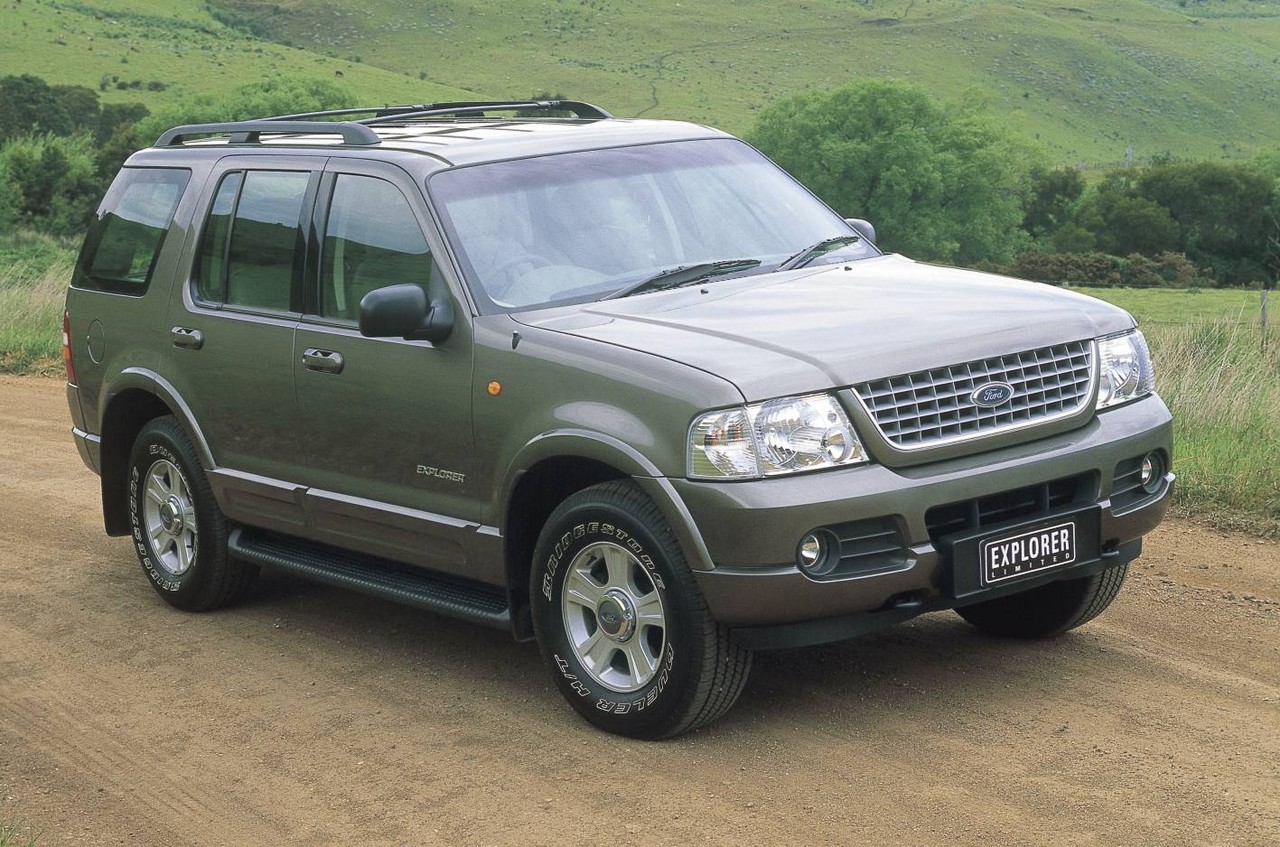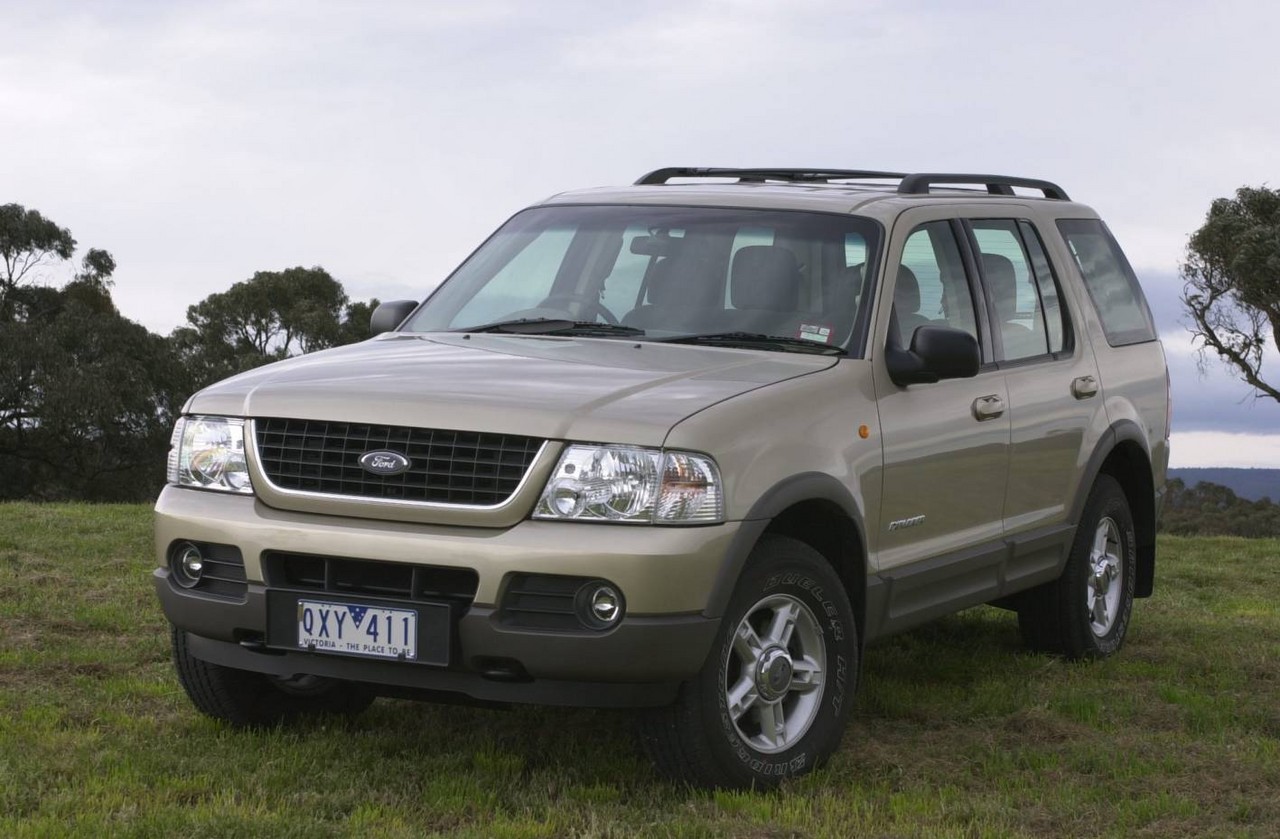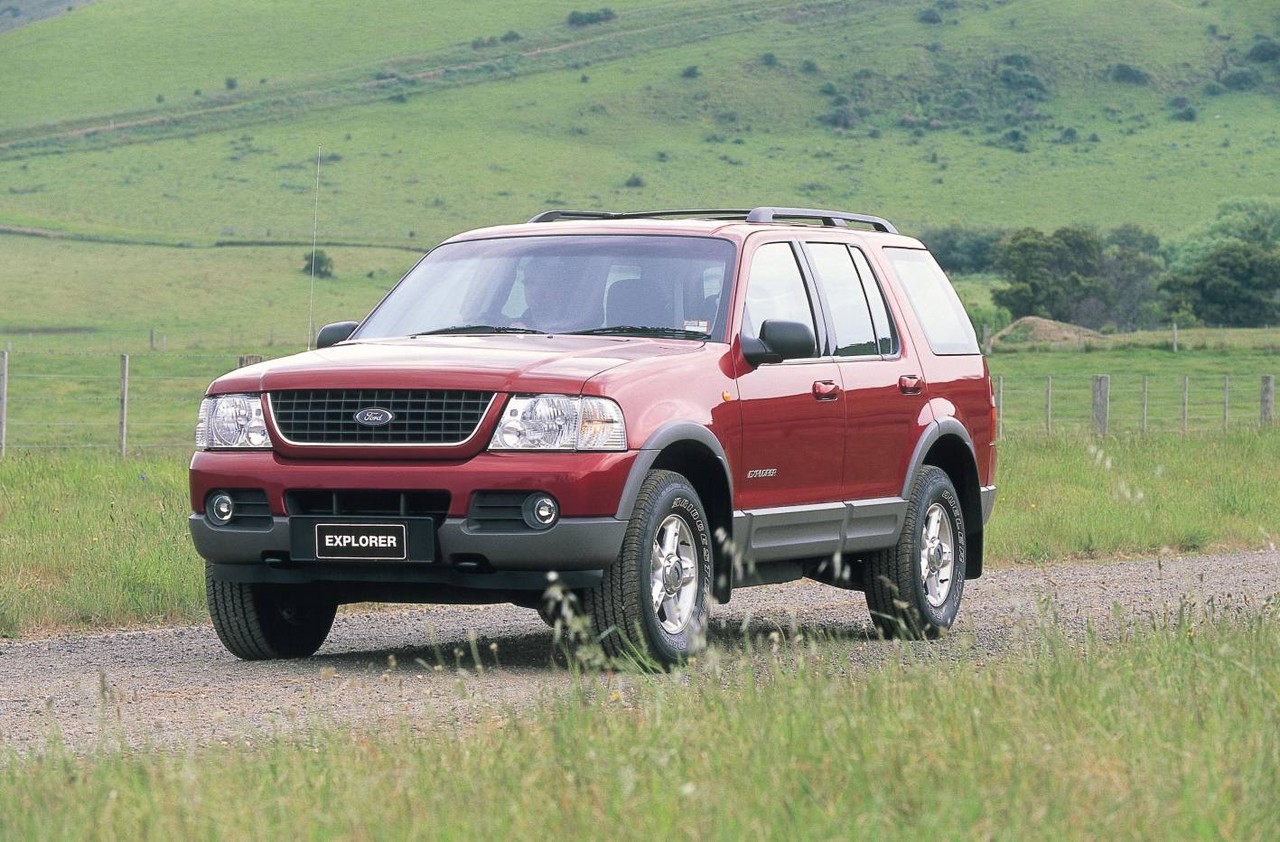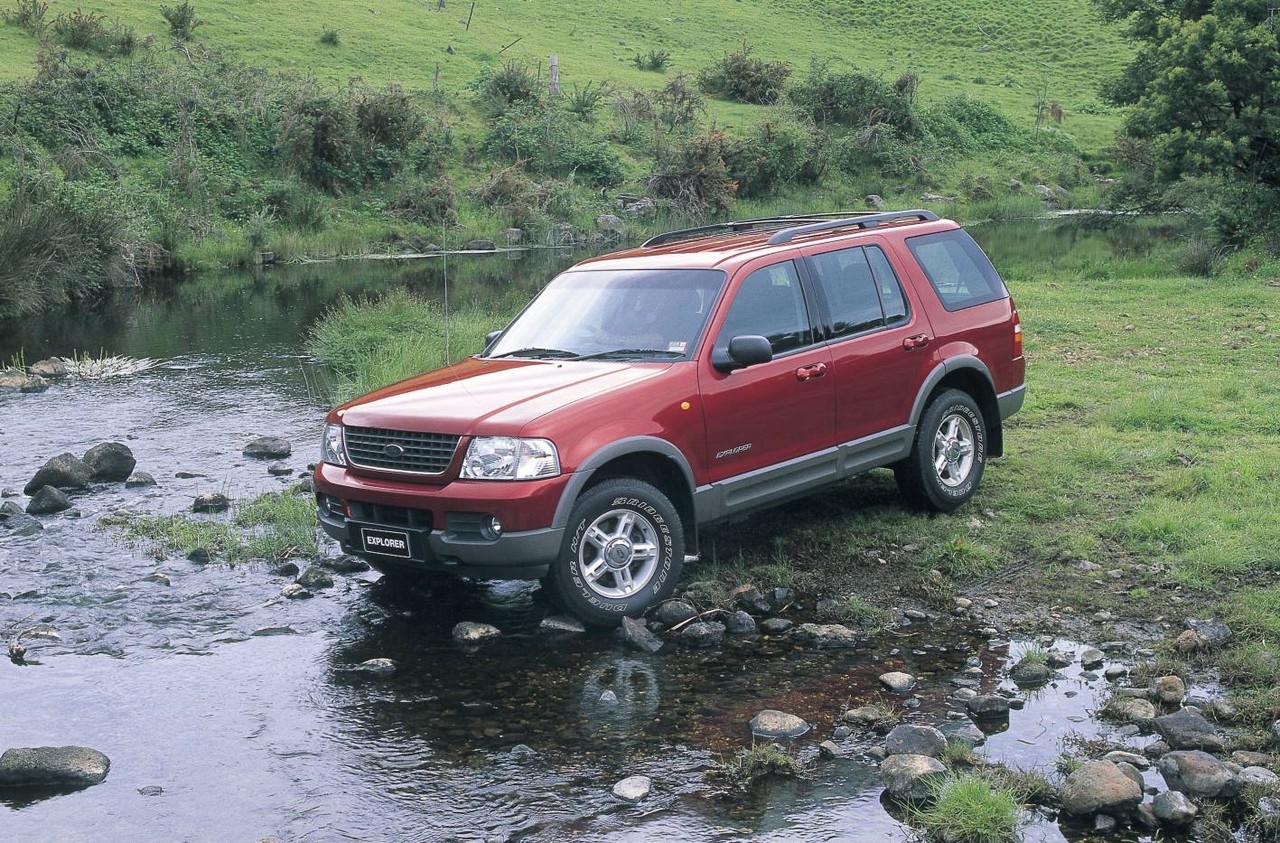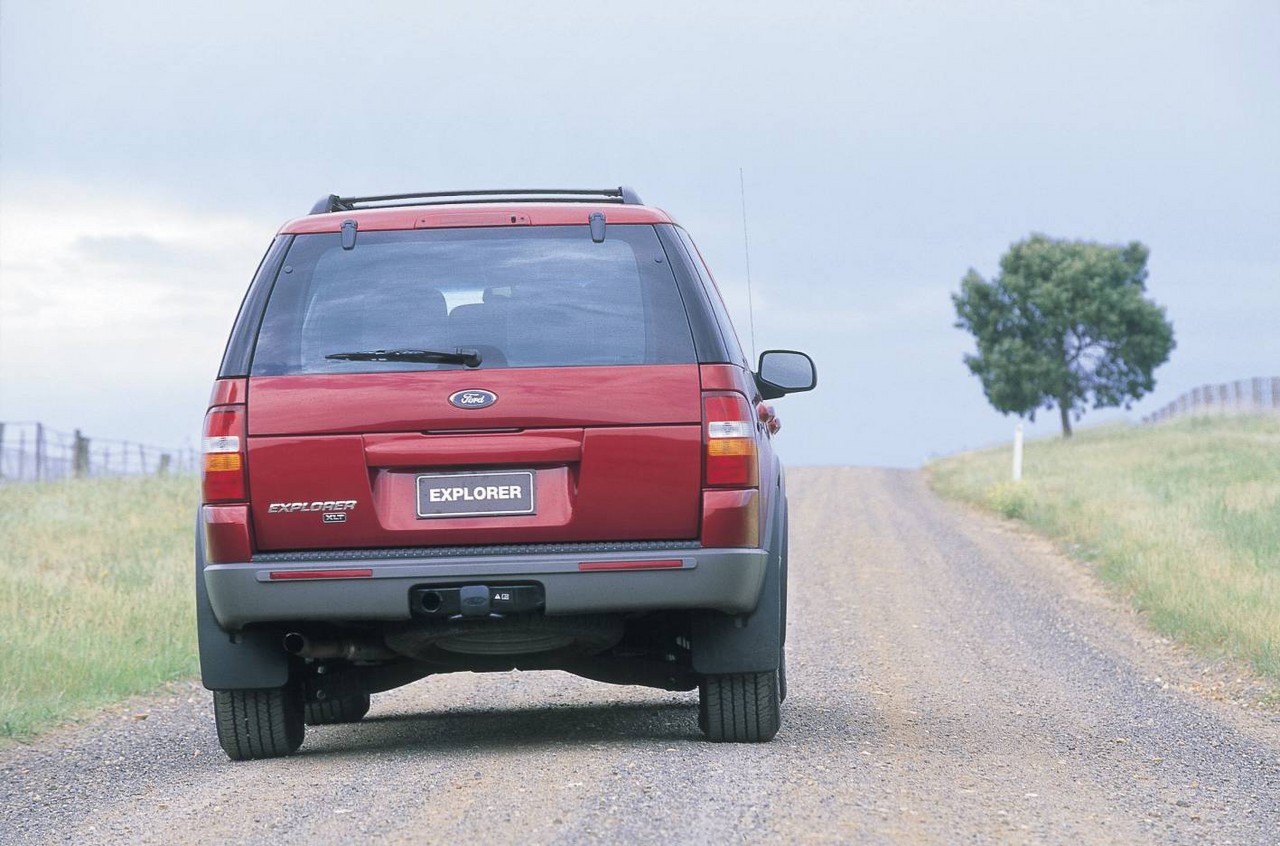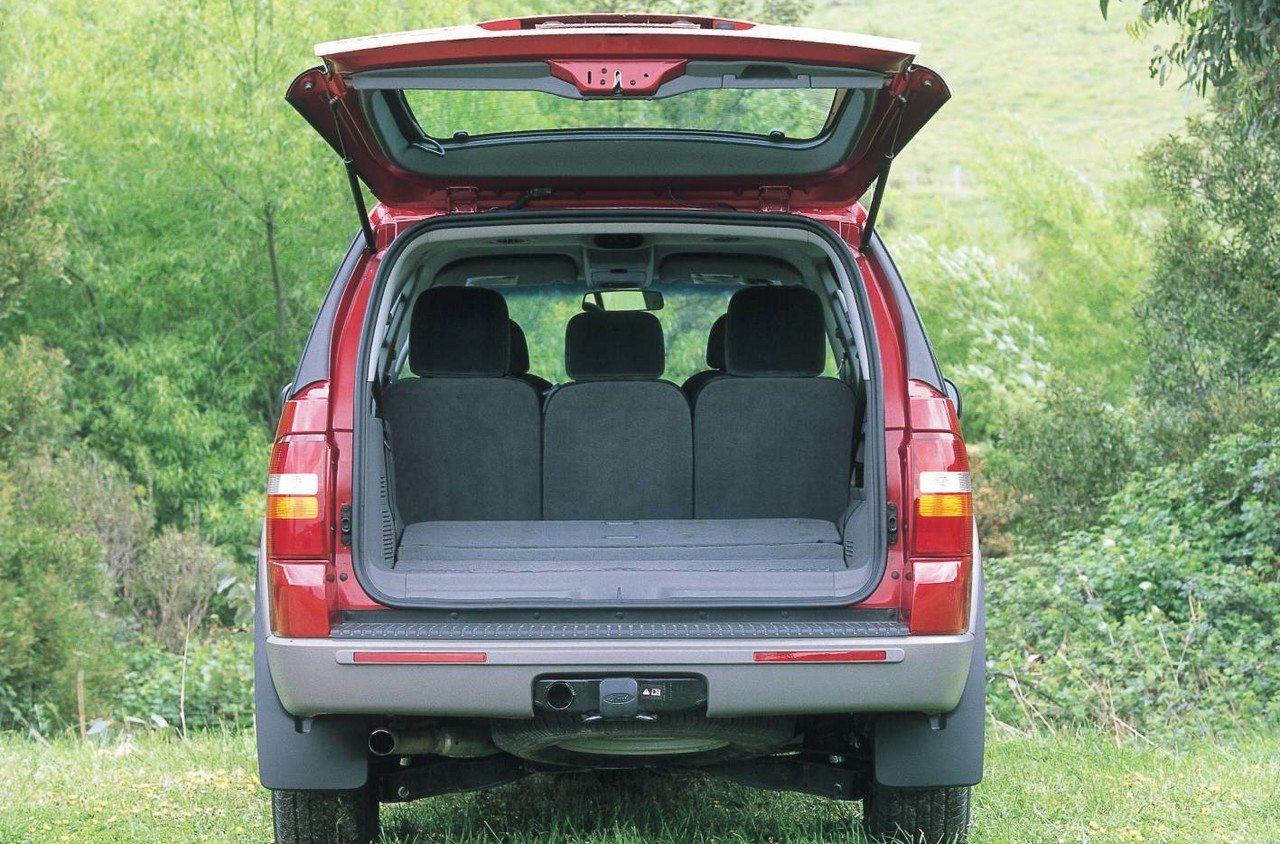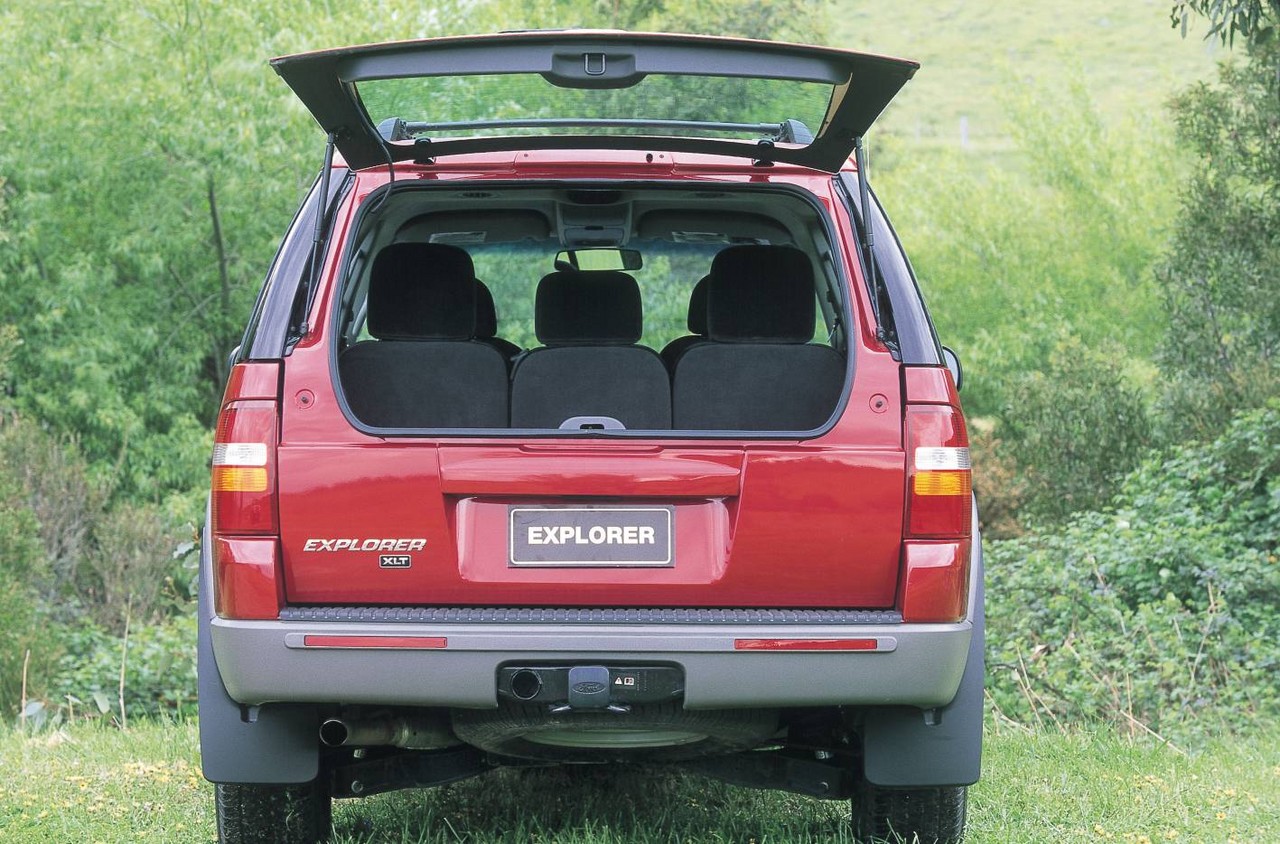
- Refined 4.6-litre V8 engine
- ‘Control Trac’ four-wheel drive system works well
- Competent dynamics
- Suspension lacks compliance
- Unsupportive front seats
- Mediocre standard of build and finish
- Engines not particularly fuel efficient
Review: Ford UT Explorer (2001-02)
Overview
Released in October 2001, the Ford UT Explorer was a large, four-wheel drive SUV. Manufactured in the United States, the UT Explorer was available with either a 4.0-litre V6 petrol engine or a 4.6-litre petrol V8. The Explorer range consisted of five-seat XLT and seven-seat Limited variants, though the former was available with a third row of seats as an option. The full range is given in the table below.
The 4.0-litre V6 engine had a single overhead camshaft (SOHC) version, a variable length intake manifold and a jackshaft – in place of a camshaft – to drive a timing chain to each cylinder head. As a result, the engine had three timing chains: one from the crank to the jackshaft, one in front of the engine to drive the cam for the left bank and one on the back of the engine to drive the cam for the right bank. The 4.6-litre ‘Modular’ V8 engine had all-aluminium construction, single overhead cams, 2 valves per cylinder and coil-on-plug ignition.
Compared to the previous generation UN/UP/UQ/US Explorer , the post-2001 Explorer was 30 mm longer (at 4835 mm), 4 mm narrower (1871 mm), 77 mm taller (1807 mm) and had a 49 mm longer wheelbase (2840 mm). Furthermore, the structure achieved a 350 per cent increase in torsional rigidity and a 26 per cent increase in bending rigidity. The Explorer had independent suspension front and rear with a short- and long-arm design. At the rear, each wheel was connected to the rear differential via a half-shaft drive axle.
| Engine | Variant | Seats | Trans. | Peak power | Peak torque |
|---|---|---|---|---|---|
| 4.0-litre petrol V6 | XLT | 5 (7 optional) |
5sp auto, 5sp man. |
157 kW at 5100 rpm | 344 Nm at 4000 rpm |
| 4.6-litre petrol V8 | XLT | 5 (7 optional) |
5sp auto | 178 kW at 5100 rpm | 382 Nm at 3700 rpm |
| Limited | 7 |
4WD system
The post-2001 Explorer was fitted with Ford’s ‘Control Trac’ four-wheel drive system which included an electromagnetic multi-plate clutch ; models with automatic transmissions were also fitted with a limited slip rear differential as standard. The four-wheel drive system featured three selectable drive modes: ‘4×4 Auto’, ‘4×4 High’ and ‘4×4 Low’. In ‘4×4 Auto’ mode, 96 per cent of torque was directed to the rear axle, although torque would be automatically redirected to the front axle in the event of slippage. Furthermore, ‘4×4 High’ locked the front and rear axles for permanent four-wheel drive, while ‘4×4 Low’ engaged the Explorer’s low range gears which had a 2.48:1 reduction ratio.
Safety equipment
Standard safety equipment for the Explorer XLT included dual front airbags, ABS, electronic brake force distribution and front seatbelts with pretensioners and load limiters; the Limited was also fitted with ‘safety canopy’ curtain airbags (for front and second row occupants) which were designed to deploy in the event of a rollover to prevent defenestration. Compared to its 1996 predecessor, the 2001 Explorer was 350 per cent sitffer, with a 26 per cent improvement in vertical and lateral bending.
Features: Explorer XLT and Limited
Standard features for the Explorer XLT included 16-inch alloy wheels, a four speaker sound system with a six-stack CD player, air conditioning, a six-way power adjustable driver’s seat, cruise control, rear fog lights, 40/20/40 split second row seats, remote central locking, power windows and mirrors, a tilt adjustable steering wheel, tinted windows, a trip computer and an immobiliser; a third row of seats (with rear air conditioning vents) was available as an option.
The Explorer Limited was further equipped with dual zone climate control air conditioning, leather seats, steering wheel audio and climate controls, rear parking sensors, a leather-wrapped steering wheel and gearshift, an electrochromatic rear view mirror and side steps. Visually, the Limited could be identified by its body-coloured bumpers, side protection mouldings and wheel arch extensions.
Review: Ford UX Explorer (2003)
Overview
Released in March 2003, the UX Explorer introduced improved safety equipment and features. Visually, the UX Explorer could be identified by its new alloy wheel designs and chrome grille. Inside, the trim and instrumentation graphics were also revised.
| Engine | Variant | Seats | Trans. | Peak power | Peak torque |
|---|---|---|---|---|---|
| 4.0-litre petrol V6 | XLT | 5 (7 optional) |
5sp auto, 5sp man. |
157 kW at 5100 rpm | 344 Nm at 4000 rpm |
| 4.6-litre petrol V8 | XLT | 5 (7 optional) |
5sp auto | 178 kW at 5100 rpm | 382 Nm at 3700 rpm |
| Limited | 7 |
Safety equipment
Safety equipment was enhanced with the ‘safety canopy’ curtain airbags made standard on the XLT (previously only fitted to the Limited). The centre second row seatbelt was also upgraded to a lap-sash design.
Features
Standard features were extended to include 17-inch alloy wheels, a six-stack CD player, driver’s seat memory settings and front fog lamps.
Review: Ford UZ Explorer (2003-05)
Overview
Released in November 2003, the UX was a minor update for the Explorer range.
| Engine | Variant | Seats | Trans. | Peak power | Peak torque |
|---|---|---|---|---|---|
| 4.0-litre petrol V6 | XLT | 5 (7 optional) |
5sp auto, 5sp man. |
157 kW at 5100 rpm | 344 Nm at 4000 rpm |
| 4.6-litre petrol V8 | XLT | 5 (7 optional) |
5sp auto | 178 kW at 5100 rpm | 382 Nm at 3700 rpm |
| Limited | 7 |
Features
Standard features were extended to include front mudflaps and tyre pressure monitoring, while the Explorer XLT was fitted with body-coloured bumpers and side steps.
Related links
